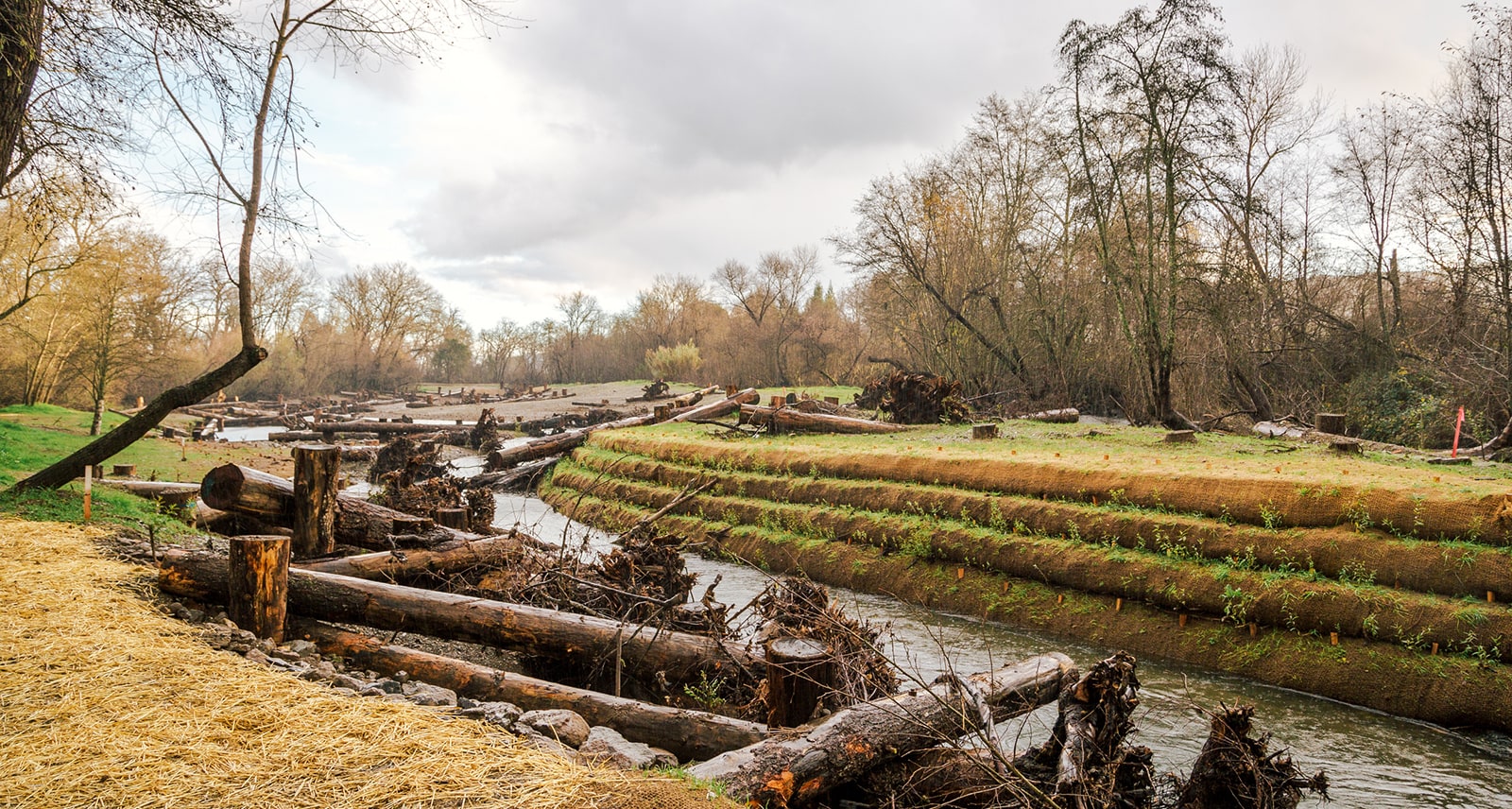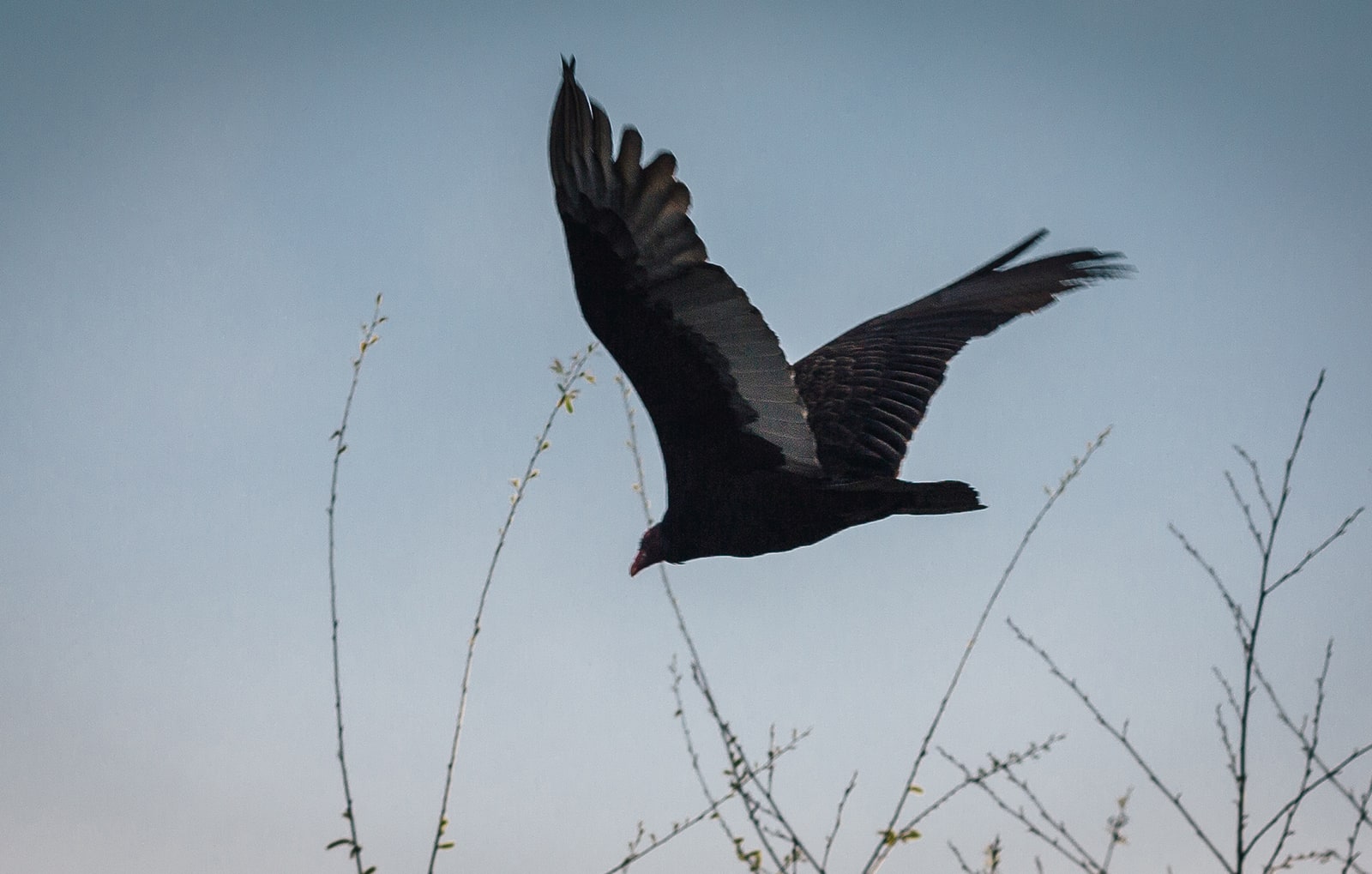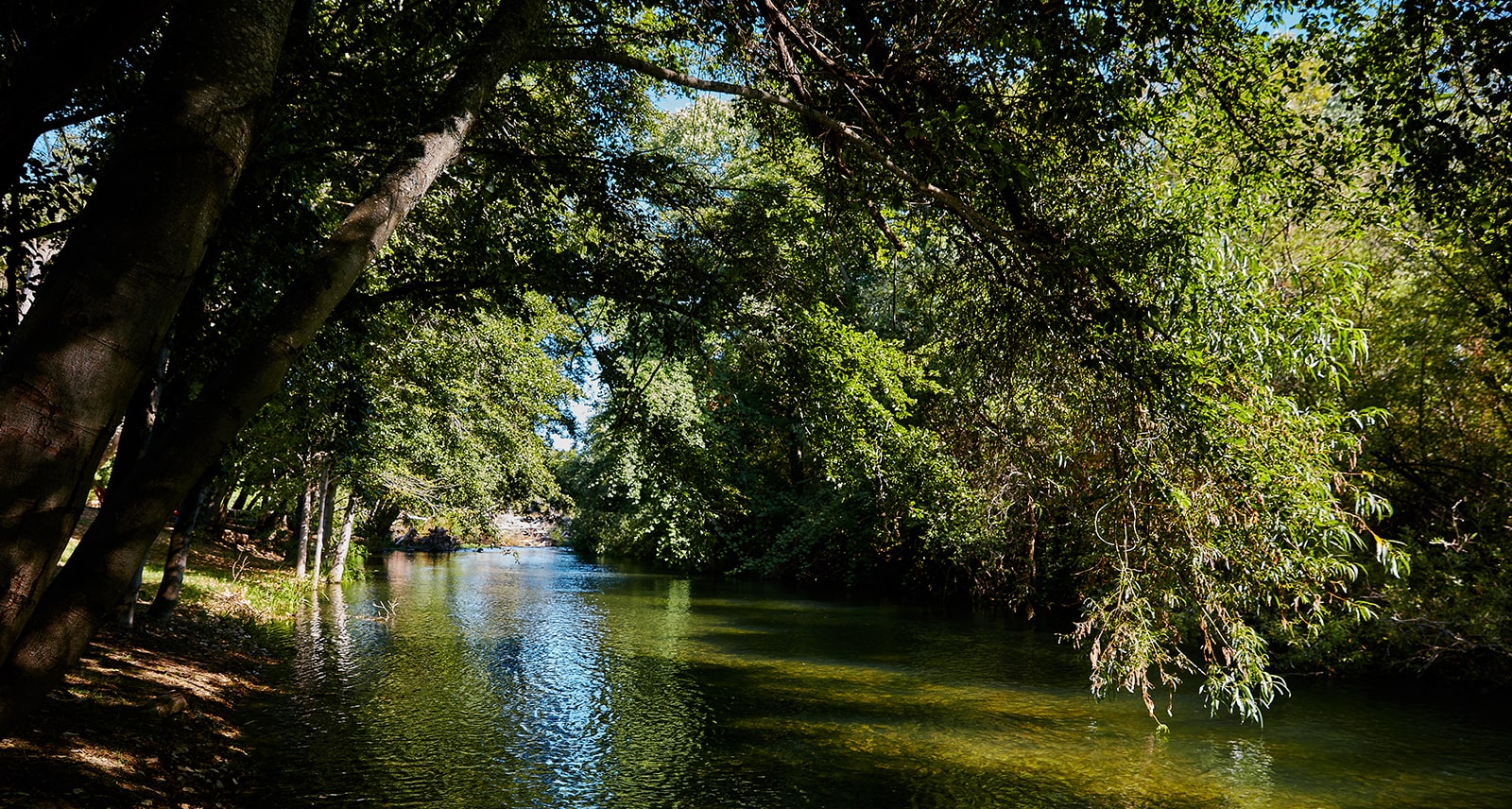The Dry Creek riparian corridor- located in the middle reach of the Russian River watershed- meanders through our property on its way to the mighty Russian River and ultimately the Pacific Ocean. The Russian River was once considered to be one of the best fishing streams in the world. In the late 1800s and early 1900s, this waterway welcomed salmonids (coho, chinook and steelhead) by the thousands, returning every year from the Pacific Ocean November through March to spawn. They were so plentiful, there are stories that farmers showed up with their pitchforks to harvest the fish from the streams.
Over the course of decades, conventional farming practices and gravel mining in the Russian River took a toll on the watershed and the fish. The land around the waterways was cleared of native vegetation, resulting in significant erosion and increased water temperatures. If the temperature of the creek goes up just a degree or two, the fish won’t spawn or the eggs will die. Agricultural run-off added synthetic fertilizers into the water, encouraging algae growth and decreasing the oxygen available for the fish. Gravel mining downstream pulled rocks down the waterway, increasing the water’s momentum and damaging tidepools. Birds and other wildlife that depend on the health of their waterways were gravely impacted.
The creek restoration project fit our earth friendly philosophy perfectly and we have been very pleased to collaborate with the Sonoma County Water Agency and other wineries and vineyard owners to restore this incredible watershed and build another important legacy for Truett Hurst.

Since 2015, we have been working with the Sonoma County Water Agency, in cooperation with other wineries, neighbors, and the U.S. Army Corps of Engineers to restore and protect this precious habitat for these endangered fish and all the creatures that depend on a healthy watershed. Native vegetation has been planted along the banks, replacing invasive plants, to provide shade, prevent erosion, and create habitat for birds, beneficial insects, and other wildlife. Weirs are built to slow the velocity of water and provide pools in which the fish can safely rest before continuing their upstream journey to spawn. Boulders, root wads and logs create backwaters, side channels, and shady habitat for the hatchlings to live in during the summer, before they make their way out to the Pacific Ocean and start this incredible cycle all over again.

Our guests and staff observe first-hand the rewards of this work. Fish can be spotted in the late winter, returning to their birthplace to spawn. Osprey, red tail hawks, golden eagles, blue herons, white cranes, ducks, and even an occasional otter entertain and delight. Our goal is to do our part to help restore the Dry Creek ecosystem so that these fish, as well as all living things, can thrive.
